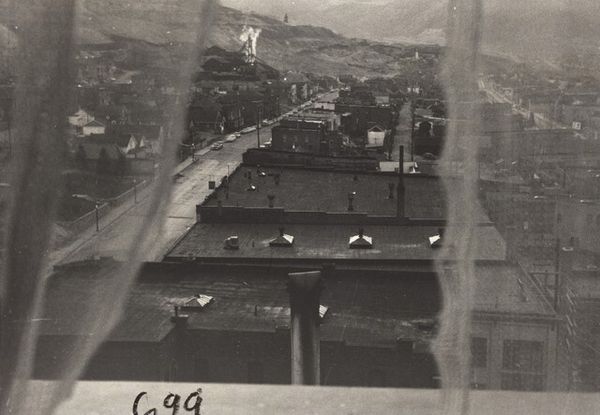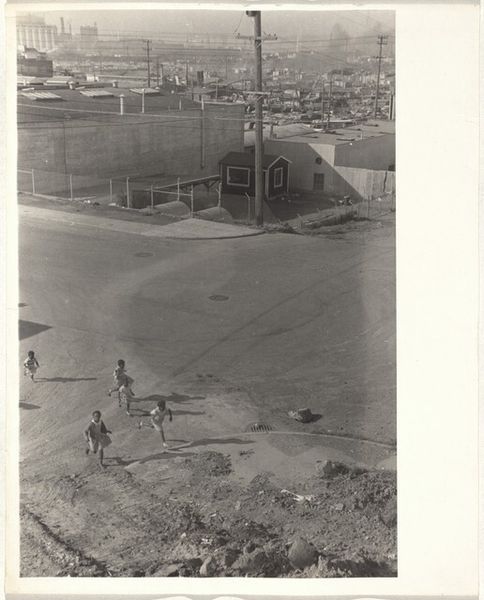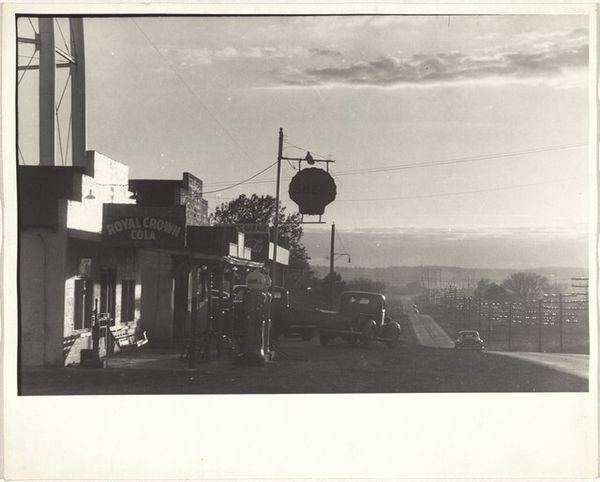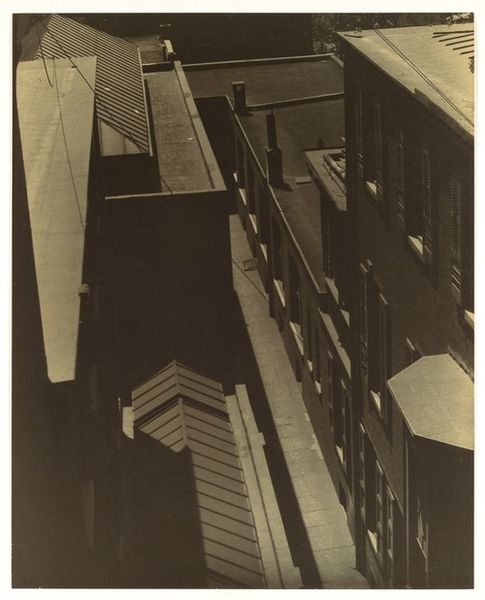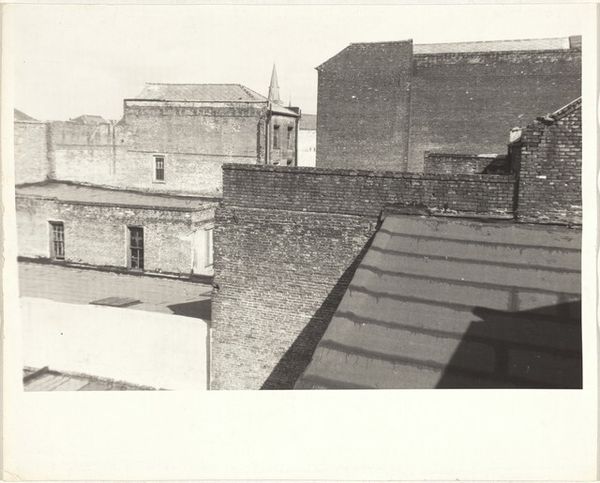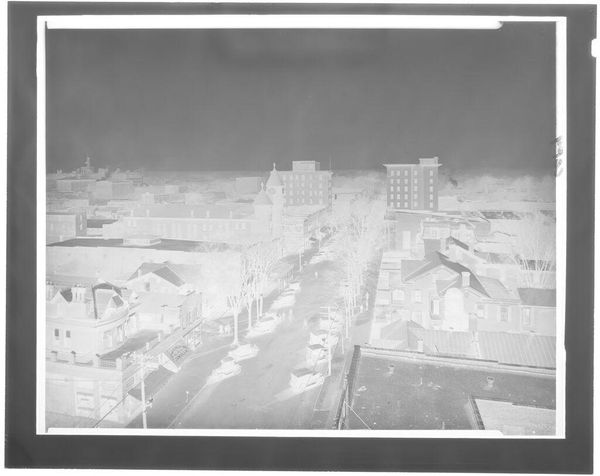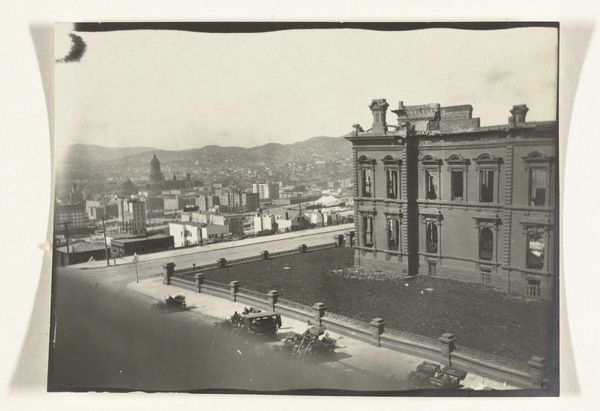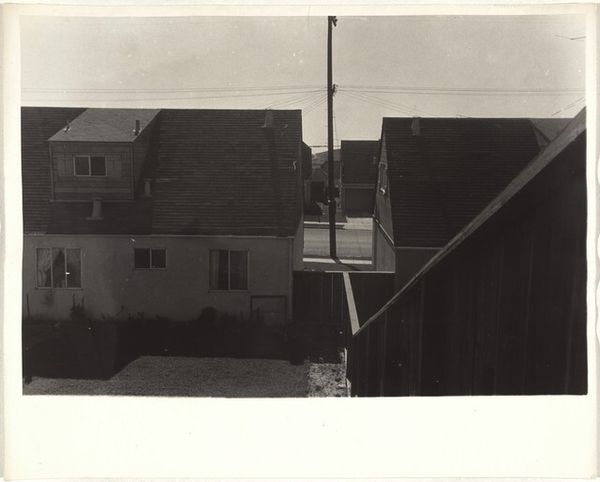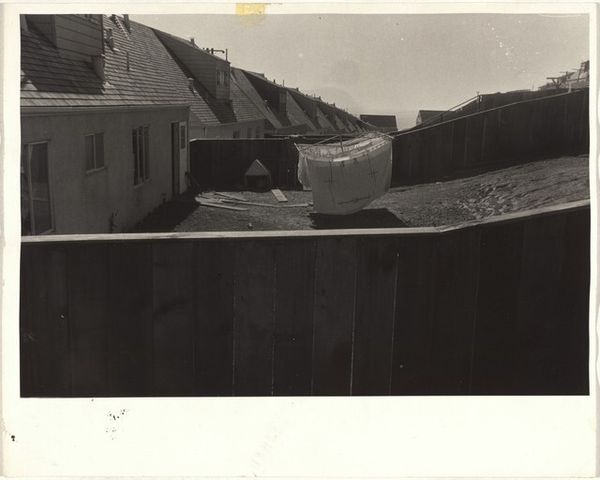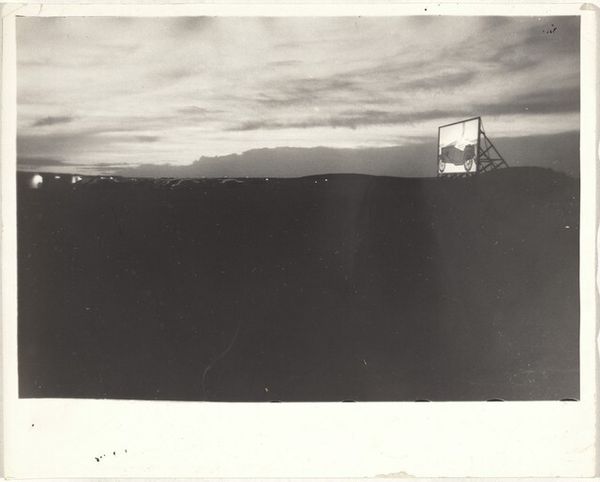
print, photography, gelatin-silver-print
#
print photography
# print
#
street-photography
#
photography
#
gelatin-silver-print
#
cityscape
Dimensions: sheet: 25.2 x 20.3 cm (9 15/16 x 8 in.)
Copyright: National Gallery of Art: CC0 1.0
Curator: Robert Frank’s 1956 gelatin silver print, "Rooftops from hotel window--Butte, Montana", captures a moment seemingly caught between industry and nature. What strikes you most when you look at it? Editor: The overwhelming feeling is one of muted darkness, a landscape layered in grays, even the mountain range seems subdued by the urban sprawl encroaching below. It really does bring home to me a sense of how our labor is so heavy upon the land. Curator: That darkness is interesting, especially when we consider Frank's project as a whole. He was deeply embedded in documenting the American experience, a nation grappling with its identity amid postwar industrialization. Butte, Montana, was historically a copper mining town, which heavily dictated its socio-economic realities, as we can see expressed so bluntly in this capture. How does it influence our perception? Editor: The photograph certainly reveals much about the labor history and social dynamics inherent in that town's architecture. See how those solid, dark roofs, factories most likely, are situated much more prominently than the more faint mountain landscape lurking at the picture’s edges? Curator: Indeed. This visual choice highlights the dominance of industrial labor. The rooftops appear almost like monuments, yet the grittiness of the print itself reveals their lack of refinement or grandeur, and more so their almost depressing function, as sites for labor. Do you believe this industrial perspective is being interrogated, here, in the historical capture of Butte? Editor: Definitely. Frank doesn't romanticize industrial production. He’s looking squarely at the constructed landscape and implicating, almost accidentally through its framing, how integral labor becomes to that construction. Curator: Yes, there's a real dialogue between Frank's individual experience and the much wider themes of capitalist society on display, specifically what a society in transition to mass modes of production looks like and its effect on natural resources. Editor: Exactly, there’s an awareness of how intertwined everything is here: the mining town's economy, its social hierarchies, the visible marks left upon its physical setting. The materials of labour are the actual materials with which the image comes into being. That the print itself is silver is not just ironic. Curator: I think for me it speaks volumes about the period of time during which the picture was taken, and that crucial understanding is central. It certainly resonates in how we, ourselves, find dialogue with similar spaces today, that is also of course mediated through identity and production, albeit a very new version of these themes. Editor: I agree, a stark photograph. And certainly its somber qualities remind us about labor’s crucial role within cultural constructions.
Comments
No comments
Be the first to comment and join the conversation on the ultimate creative platform.
